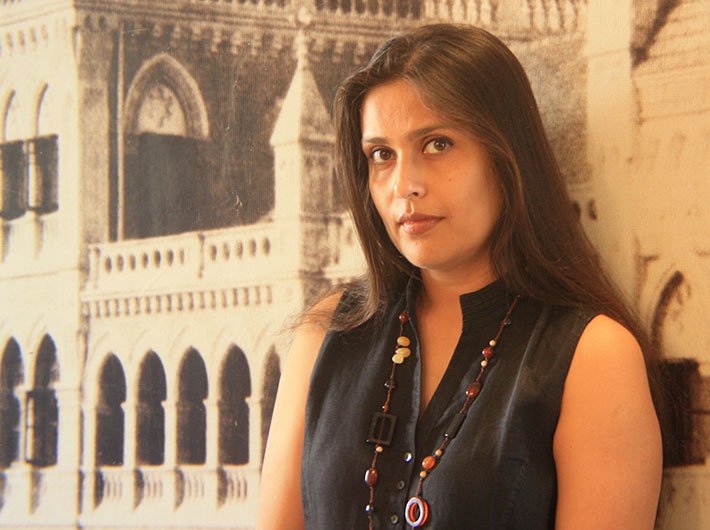Urban infrastructure and heritage preservation should go together, else we will lose all
Conservation architect, author, consultant to international and national bodies on heritage preservation and winner of multiple awards, including the largest number of UNESCO Asia-Pacific awards for heritage conservation, Abha Narain Lambah wears many hats. Her vast repertoire spans preparing plans for restoration of ancient to medieval sites, regional and urban conservation plans, urban design intervention and streetscaping for different government, municipal and corporate agencies.
As unplanned and unforeseen growth hangs over urban landscape like the proverbial sword of Damocles, Lambah tells Geetanjali Minhas why urban governance must blend modern infrastructure with the historical. Edited excerpts:
Does India have enough trained people for heritage conservation?
A decade ago, there were not enough in the field. But today there are a lot of architects who have specialised in conservation. There are people trained as museologists, conservators, material conservators, etc. This is a field where you learn mostly on the job – many fresh graduates come over regularly even at my firm (the Mumbai-based Abha Narain Lambah Associates). Very often they have a lot of theoretical knowledge but need to work at a site and work a few years to be able to grasp the situation. It is the work experience that counts.
(At present) we have a growing band of conservation professionals who have good skill sets that only need to be honed. But, there needs to be some sort of harmony with the way projects are envisioned and executed.
What are the challenges you have faced in this line of work?
When I started out 20 years ago there was no awareness, and there was no funding for conservation. The government did not spend any money on conservation. The only agency doing anything was the Archaeological Survey of India, which barely managed to look after and clean its own monuments. There was no funding from the private sector either. In fact, most of my initial work was to actually raise awareness on conservation among people. I was a founding-member of the Kala Ghoda Association, Horniman Circle Trust, and DN Road Heritage Mile Association. My initial work was a lot about getting people together – like talking to shopkeepers on DN Road and trying to get them to clean their signboards, or working on creating Kala Ghoda as an art district.
All this was done pro bono, with like-minded people pooling in resources and without any government funding. But things have changed a lot since then. In the 13th finance plan, the planning commission gave every state between '100 crore and '175 crore only for conservation. This was something unheard of 10-20 years ago.
Mumbai has a history behind it...
It does, and so many other cities – like
Agra, which is teeming with monuments, or Delhi... Yes, our city is very historical but there needs to be awareness, and everyone should feel the need to do something for the city – whether it is the collector, municipal commissioner or an average citizen. Unless there is awareness that our heritage has to be conserved it is of no use. That is something we see happening today, and that definitely was not on political or government agenda even a decade ago.
So you really started at the ground level...
I didn’t have a choice. At that point I would introduce myself to a government officer (laughs) as a conservation architect, and they would ask me, ‘what does a conversation architect do?’ So in the literal sense one had to explain the concept... that it is a specialised study in architecture. Those concepts have now become very common and people are far more aware.
Are you satisfied with the government’s role in heritage conservation?
A lot needs to be done. Our country has an abundance of riches when it comes to historical buildings and towns. Over the past years, the government has become more aware of monuments. So, as far as heritage of monuments is concerned, whether it is ASI or the government, funding has increased and improved. But we have a lot of heritage in villages – not monuments but structures that need to be preserved. There are amazing historic streetscapes in Mandu, Jaisalmer and in the interiors of other cities. This is our colonial heritage.
But we have been far too monument-centric in our approach; we need to get out of that and look at heritage not just as monuments but (in terms of) historical settlements. Our villages, and every historic city, have a beautiful historical core – be it Allahabad, Varanasi, Kancheepuram or any other town. Driving down Shekhawati (in northeast Rajasthan), you will find beautiful havelis knocked down and aluminium and glass facade buildings coming up to replace them. That is alien to that environment.
We have not been able to put up urban planning controls, or have policy guidelines on issues about urban governance that would look at blending the two – having modern infrastructure and keeping the historical fabric and buildings intact. And this mismatch has cost us.
This has led to an irreversible loss of our traditional heritage...
We have already lost a huge amount and it will be too late unless we do something very urgently. Our forts, temples and palaces will survive but everything else that forms the core of our cultural resources would be lost forever.
What is the status of heritage conservation across the country?
Things have improved. The government of Punjab, a state not known for cultural sites, is spending '100 crore from the 13th finance plan on just the upkeep of its monuments. So, a beautiful fort like Qila Mubarak in Patiala or the Moorish Mosque in Kapurthala, which normally do not get visitors since they are not part of the general tourist route, would become beautifully restored structures in a few years. Conservation work is starting (at these structures). I would say these are very exciting times, as things are beginning to happen, but the results will only be seen after three or four years when the projects are completed and all the thought is crystallised into action.
What challenges does urbanisation pose for heritage buildings?
Today we are rapidly urbanising but our infrastructure and heritage preservation is not keeping pace. We do not have conservation by-laws in any town. So what eventually rules the town is what the municipality says, which is only in terms of area versus floor space index or floor area ratio. If a building is historical, they (municipal officials) don’t really care. There is no bye-law or local law that prevents you from knocking down historical havelis and turn ing them into modern concrete jungles; (there is also) no law that gives incentives for restoring the dwelling rather than knocking it down.
Even aspects like height and material regulations... if you see, Jaipur was built in the 18th century with colour and material control. Today, in the 21st century, our towns are not able to define and dictate materials that should be used in historical settlements.
Basic stormwater drainage and sewerage are not provided as primary urban infrastructure to citizens. In historical temple towns across the country – be it Uttar Pradesh, Rajasthan or Madhya Pradesh – pilgrims find themselves standing in sewerage water from the backflow during rains. Our entire urban infrastructure is crumbling and unless we keep pace with both we are going to have nightmares, which are already beginning.
For example, a big mess took place in Hyderabad when the municipality demolished frontages of old havelis while widening streets. Widening of areas around Charminar Road made matters worse, because the roads were narrow as they were meant for pedestrians. Road broadening has congested the area further with vehicular traffic. In the name of road widening historic facades of the ancient Lad Bazaar were entirely demolished. Such lopsided schemes are creating biggest urban nightmares we are facing today.
Agra is another case in point. Every foreign visitor who comes to India wants to visit the Taj Mahal. But the drive between Agra railway station and the Taj Mahal is a nightmare. Eventually, this is our showcase to the rest of the world.
So, what is the need of the hour?
Sensitivity towards heritage needs to be maintained, otherwise we will lose most of it. Various state governments need to prioritise their historic settlements at the city, district and town levels. And these have to be treated differently from run-of-the-mill towns – these places need care while upgrading infrastructure without destroying historical buildings.
Different multi-disciplinary units must be brought together. Unless the ministries of culture, urban development, panchayati raj and human resource development sit together and have a dialogue we will only have narrow-vision reactions in silos. Even in cities you need to put the planner in conversation with the architect, the conservationist, infrastructure planner, and (finally) come out with suggestions and answers.
Can real estate regulation in anyway help address these problems?
Land is a state government issue. Like coastal regulations and special economic zones, zoning of historical settlements and areas is a must. You also need to have a carrot and stick approach like conservation of historical buildings and disincentives for demolishing such buildings, by-laws that do not just address floor area ratios but also historical streetscaping, height control, skyline regulation, aspects that are completely ignored in our planning process. All these issues need to be knitted together to have any impact.
How do you rate India when it comes to heritage conservation?
We are placed very low in the pecking order when you look at countries like Italy. UNESCO talks about urban landscape with the line of vision – that is, what your eyes see till the horizon – (that) should be mandated by law to be conserved. Our Ancient Monuments and Archaeological Sites and Remains Act of 2010 regulates a 200-metre boundary around any site, and yet we are not able to implement it. Within 25 metres of Charminar (in Hyderabad) we have an aluminium-clad structure in complete violation of all municipal norms.
So with the kind of illegal encroachment and illegal construction, often with collusion of municipal officers, we are nowhere near the vision that countries in Europe have already achieved.
How can awareness levels be raised among the public?
The general public has already become a little aware. Our politicians and bureaucrats need to be made more accountable. Why should we not ask why there are 350 encroachments around Charminar? Why isn’t the municipal corporation of Hyderabad answerable to such blatant encroachment? Why do we allow structures to be built around historical monuments and then say demolishing it will lead to riots? Well, they do not come up overnight. We are not vigilant enough, and then we don’t take corrective action. We need more accountability on issues like this.
As a heritage preservationist, what is your message here?
If you forget your past, it is probably the worst sense of ruthlessness that you have set for yourself – it’s a trap we are falling into as a country. We are so eagerly imbibing everything that is western and copying western models of architecture, etc., that we are losing our own vernacular architecture. Earlier, Indore, Kanpur, Lucknow or any other city had its own flavour and identity. Today these are being replaced by glass facades and shopping malls in all towns with anonymous identity.
In the process, like in America, we are gradually losing the real character of our towns when European nations have been very careful about retaining their identity.
The interview appeared in November 1-15, 2014 issue

